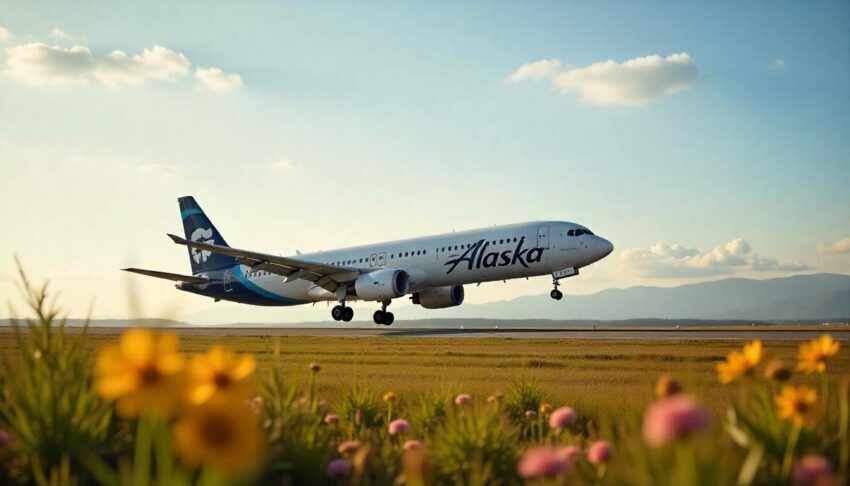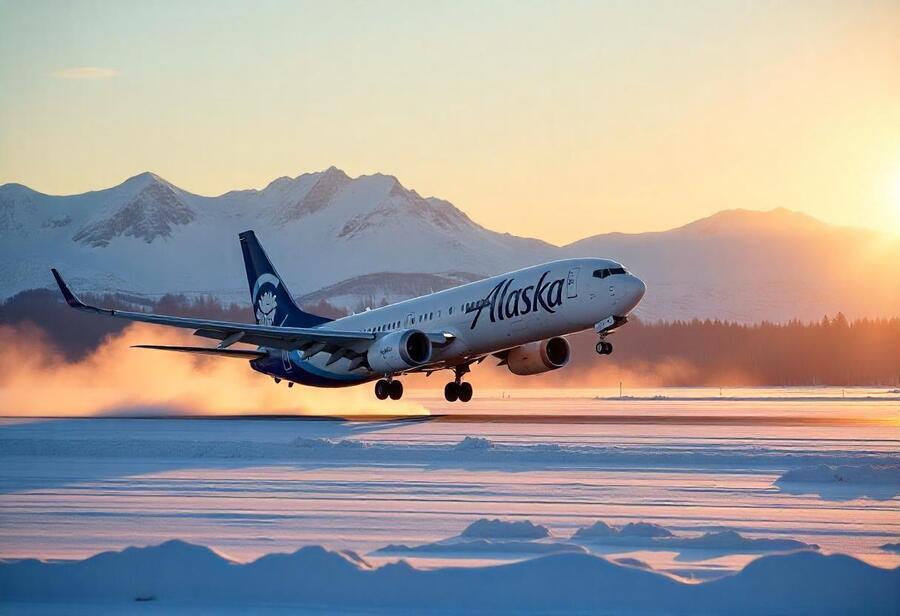Alaska Airlines just made news by dropping 14 daily flights across one of its mainland networks through the end of July. That is taking place at Horizon Air. The canceled routes may seem irrelevant to Hawaii and just another Pacific Northwest hiccup. But this latest disruption could be an early warning light for Hawaii travelers watching everything as Alaska absorbs Hawaiian Airlines.
When an airline starts cutting flights and turning down new planes, it’s rarely an isolated problem. In this case, the airline now responsible for Hawaii’s air travel future is already strained on the mainland, trying to scale up long-haul and international service while bringing its newly acquired Hawaiian operation into line.
Alaska’s regional carrier, Horizon, was supposed to receive two new Embraer E175 jets in May. However, the planes were delayed after Alaska rejected the deliveries, citing new U.S. tariffs that would’ve added unanticipated costs. A 10% baseline duty on imported aircraft like Embraer’s, made in Brazil, is still in effect.
Without those jets, Horizon is canceling 14 flights daily, primarily on high-frequency routes where passengers can be rerouted more easily. Cirium data also reflects that Alaska has canceled 55 flights out of Seattle Airport this summer (this is cumulative and not a daily average).
Those include flights from Seattle to Spokane, Boise, and Sacramento. These cancellations illustrate how even short-haul gaps at key hubs can ripple outward, especially during peak season. However, any cut to regional lift means more stress on remaining routes and crews, with fewer options if something goes wrong.
These disruptions could translate into tighter schedules, increased delays, and more missed connections for Hawaii-bound passengers from Alaska’s mainland regional airports. It’s one more sign that the system Alaska is building may not be as resilient as advertised.
Behind these summer cuts lies a deeper financial strain. Alaska is juggling multiple economic pressures: slowing domestic demand, inflation-driven cost increases, volatile fuel prices, labor contracts, fleet updates, and now, getting Hawaiian Airlines under its belt. That merger wasn’t cheap, and as it unfolded, it became clear it was happening just as airlines are being forced to rethink everything from route strategy to aircraft orders.
In its last earnings call, Alaska didn’t provide full-year financial guidance, citing uncertainty. That silence says a lot. While Alaska’s leadership insists they’re in a strong, long-term position, short-term cracks are another matter. And they are of great importance to those of us with the highest expectations regarding Hawaii.
Hawaiian Airlines brought many good things, including widebody aircraft and international routes, into Alaska’s portfolio, but it also brought underperforming assets, stiff competition, and a long list of integration challenges to resolve. If Alaska is already rejecting new planes and slashing flights to save cash, the promise of a seamless Hawaii expansion looks more uncertain.
While many of the new tariffs announced in April are still on hold, the 10% duty on imported Embraer jets remains. That adds up even on a small order, and the cost burden may push future deliveries out even further for Horizon and other regional carriers.
This isn’t just about one aircraft model or supplier. The airline industry depends on a complex, global supply chain, and when trade policy shifts, everything from maintenance parts to cabin components to entire aircraft can be delayed or derailed.
Alaska says its Boeing orders are unaffected, indicating that the airline targets specific cost exposures rather than pulling back more broadly.
Horizon previously ordered eight more of the Embraer E1785, with options for thirteen beyond that. If tariff conditions remain in place, it could raise doubts about Horizon’s ability to scale its network as planned.
And for Hawaii travelers, the concern isn’t just regional. Alaska is also now responsible for Hawaiian’s 25-year-old fleet of interisland 717s, which were long planned for retirement. That transition now appears uncertain, as Alaska faces tough decisions about where to invest and what can wait.
Alaska says the current cancellations are limited to Horizon’s regional network, but systems are interconnected. Fewer regional flights mean fewer inbound passengers to West Coast hubs, which also launch nonstop Hawaii flights.
With Alaska planning to unify operations with Hawaiian in the months ahead, these disruptions may eventually bleed into interisland service, long-haul flights, and even loyalty redemptions. Already, travelers report confusion over schedules, partner availability, and credit card perks, among other integration issues.
We’ll be watching to see whether changes at this regional level impact Hawaii connections or whether operational strain forces further resource reshuffling that trickles down in unexpected ways. This summer could offer a preview.
Beat of Hawaii readers have already flagged concerns over recent airline cuts and shifting reliability. When Southwest slashed flights earlier this year, one commenter wrote: “If one more airline cuts Hawaii routes, we’re stuck paying triple just to visit our family.”
Another reader pointed to Alaska’s changing service levels, saying: “They talk about expanding, but we’re seeing more cancellations, fewer nonstops, and less flexibility. Doesn’t feel like an upgrade for Hawaii travelers.”
These comments aren’t just emotional—they reflect a real shift in expectations. Hawaii-bound passengers are noticing the growing disconnect between airline marketing and operational reality. This Embraer delay adds one more reason to question what’s next.
The Alaska–Hawaii combination was pitched as a long-term investment in the future of Pacific travel. But that vision depends on stability, growth, and the ability to juggle multiple high-stakes challenges simultaneously.
Alaska is trying to launch new, fiercely competitive trans-Pacific routes, absorb Hawaiian’s Dreamliners originally intended for island flying, merge clashing loyalty programs, and manage two workforces with different contracts, cultures, and expectations. At the same time, it’s turning away new regional jets and cutting flights on the mainland side.
That’s not a small task. And for an airline the size of Alaska—tiny compared to competitors American, Delta, Southwest, or United—the margin for error is thin. One more pressure point, whether it’s tariffs, weather, or fuel, and the whole system starts to wobble.
Hawaii travelers may not care who’s flying the plane—as long as the flight’s on time, the connection works, and the seat isn’t swapped last minute. But this summer, we’ll see how much Alaska can handle without letting it reach the islands.
If you’re flying to Hawaii this summer and relying on a connection from a smaller West Coast or inland city, double-check your itinerary. The regional link might be at risk even if your Hawaii leg looks intact. And with Horizon trimming 14 flights daily, backup options could be limited.
This is also a time to keep close tabs on aircraft swaps. If Alaska/Hawaiian reshuffles widebodies to cover gaps elsewhere, seat maps and upgrade options could shift with little notice. Travel insurance might not prevent delays or help you with a narrow-body downgrade, but it can at least help with hotels and rebooking costs if problems arise mid-journey. BOH editors, too, are keeping an eye on future Hawaiian flights to ensure no unanticipated changes.
The aircraft delays making headlines today are not just a footnote. They’re part of a bigger story playing out across Hawaii’s skies.
As Alaska works to absorb Hawaiian Airlines and reshape travel to the islands, these disruptions reveal how delicate that process is. Whether it’s just a couple of missing planes, a tariff here or there, a delay, or something else, the Hawaii summer travel experience suddenly starts to look different.
It’s clear that these times and the integration of Hawaiian will test what Alaska’s made of to the core.
With this as a preview, Hawaii travelers should pay close attention. What starts on the mainland doesn’t always stay there.
Get Breaking Hawaii Travel News












